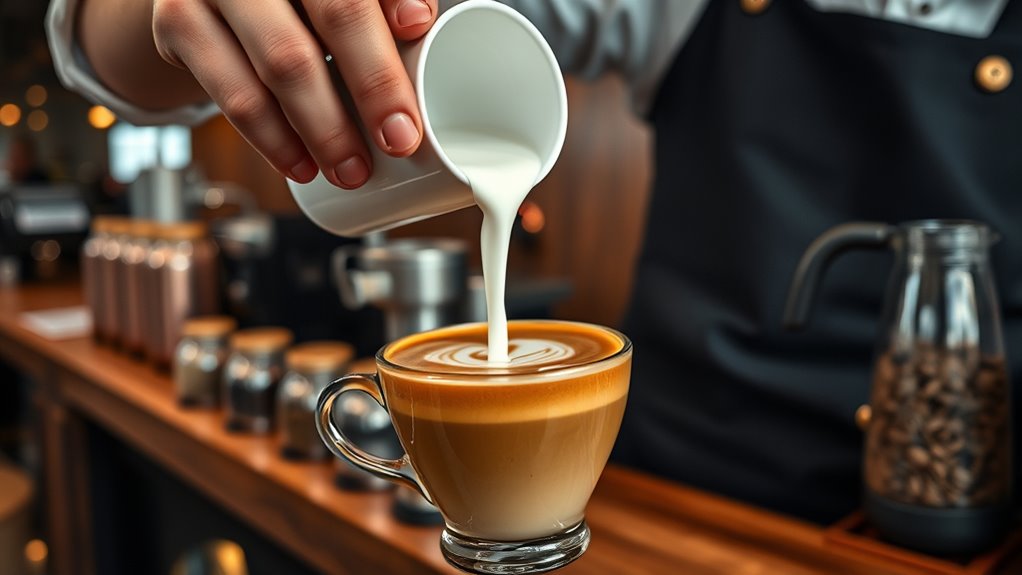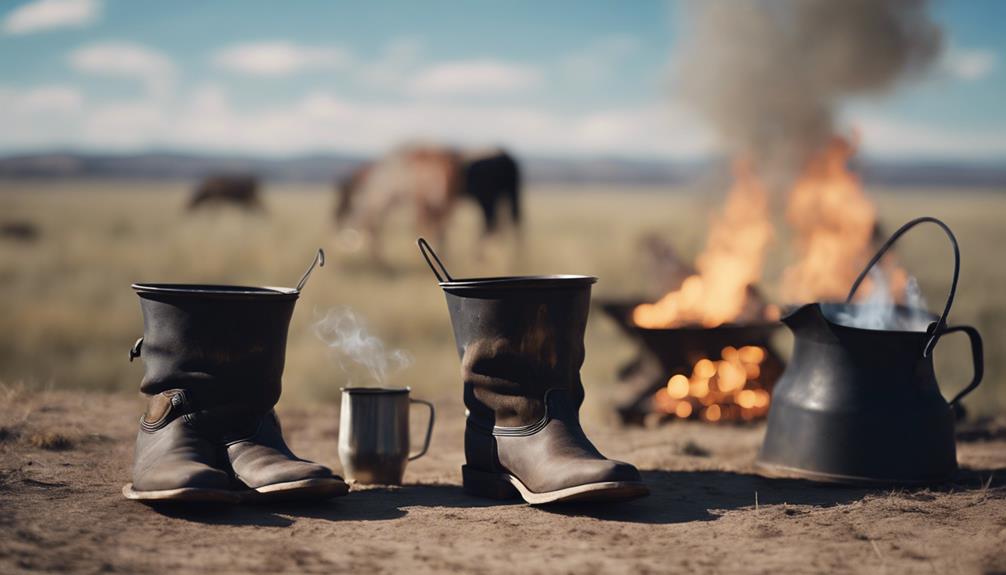The rise of third-wave coffee transforms your coffee experience by emphasizing high-quality, ethically sourced beans and artisanal brewing methods. You’ll notice a focus on transparency, sustainability, and showcasing unique flavors from single-origin farms. Baristas pay close attention to details like grind size and water temperature to highlight nuanced aromas and tastes. This movement promotes craftsmanship, storytelling, and ethical practices. Keep exploring to discover how these elements create a richer, more memorable cup just for you.
Key Takeaways
- The third-wave coffee movement emphasizes artisanal craftsmanship, high-quality beans, and complex flavor profiles.
- It promotes transparency, ethical sourcing, and direct trade relationships with farmers.
- Precise brewing techniques and industry standards highlight nuanced aromas and tastes.
- Storytelling about farm origins and sustainability deepens consumer connection.
- Major brands have popularized the movement, fostering a community centered on quality and ethics.

Have you ever wondered what sets third-wave coffee apart from your average brew? It’s all about elevating the coffee experience through a focus on high-quality, specialty coffee that emphasizes transparency, sustainability, and craftsmanship. This movement, known as third-wave coffee, transforms coffee from a simple daily ritual into an artisanal craft.
By spotlighting artisanal roasting and precision brewing methods, it highlights the unique flavor profiles of each cup, making every sip more complex and memorable.
Artisanal roasting and precise brewing reveal complex, memorable flavor profiles in every cup.
In third-wave coffee, the emphasis on single-origin beans plays a vital role. These beans come from specific farms or regions, allowing roasters to showcase the distinct characteristics of each location.
As a coffee enthusiast, you’ll notice how these beans are carefully sourced through direct trade relationships. This approach guarantees that farmers receive fair compensation and that you’re enjoying beans cultivated with ethical sourcing practices.
It’s about building trust and transparency in the supply chain, making your coffee experience more meaningful.
Craft brewing techniques are central to this movement, with baristas and roasters paying close attention to every detail — from grind size to water temperature.
The goal is to highlight the nuanced flavors that can be lost in mass-produced coffee. These techniques allow baristas to craft a beverage that reveals the coffee’s true potential, emphasizing its aroma, acidity, body, and finish.
Industry competitions like the World Barista Championship recognize excellence in this space, setting high standards for craftsmanship and innovation.
The third wave has also transformed coffee culture by encouraging storytelling.
Every bag of coffee often comes with a story about the land, climate, and labor involved in growing the beans.
This storytelling creates a deeper connection between you and the coffee, turning each cup into an artisanal experience.
It’s about appreciating the journey from farm to cup, understanding the effort behind each brew, and supporting sustainable practices.
Additionally, many third-wave roasters prioritize transparency about their sourcing and manufacturing processes, fostering trust and loyalty among consumers.
Major companies like Blue Bottle, Stumptown, and Intelligentsia have propelled this movement, making third-wave coffee more accessible and influential.
They’ve fostered a community that values education, quality, and ethical responsibility.
As a result, third-wave coffee isn’t just about drinking—it’s about celebrating the artistry, ethics, and culture behind every cup.
When you embrace this movement, you’re not just enjoying coffee—you’re participating in a global shift toward more conscious and crafted coffee experiences.
Frequently Asked Questions
Why Is Third Wave Coffee so Famous?
You’re wondering why third wave coffee is so famous. It’s because you value high-quality, ethically sourced beans, and appreciate the craft behind each cup.
This movement emphasizes transparency, sustainability, and storytelling, offering you authentic, mindful experiences.
Cities like London and Melbourne, along with renowned baristas, have helped elevate it globally.
As a result, third wave coffee symbolizes modern sophistication, attracting people like you who seek more than just a caffeine fix.
What Is the Third Wave Coffee Trend?
You want to know what the third wave coffee trend is. It’s all about focusing on high-quality, artisanal beans and craft brewing techniques.
You’ll notice a shift away from mass production toward highlighting each bean’s unique flavor and origin. Baristas use precise methods like Chemex or Aeropress to bring out the best flavors.
This trend emphasizes transparency, sustainability, and storytelling, turning coffee into a craft rather than just a beverage.
When Did the Third Wave Coffee Movement Start?
You’re wondering when the third wave coffee movement started. It began around 2003, when Trish Rothgeb first labeled it as a distinct movement. However, earlier mentions, like Timothy J. Castle’s 1999/2000 article, hint at its conceptual roots.
Why Is Third Wave Coffee so Expensive?
You notice that third wave coffee costs more because it uses high-quality, ethically sourced beans, which are pricier. The process involves small-batch roasting and precise brewing, requiring more skill and time.
Plus, direct trade relationships and sustainable practices add to costs. All these efforts focus on quality and craftsmanship, making the coffee more labor-intensive and expensive, but delivering a better, more unique flavor experience for you.
Conclusion
As you explore the world of third-wave coffee, you’ll notice how it elevates your daily brew into an art form. By focusing on quality, sourcing, and sustainability, this movement lets you truly appreciate each cup’s unique story. So, next time you sip your coffee, remember you’re part of a larger journey that values craftsmanship and connection. Embrace the third wave and turn your coffee routine into a mindful, flavorful experience.









